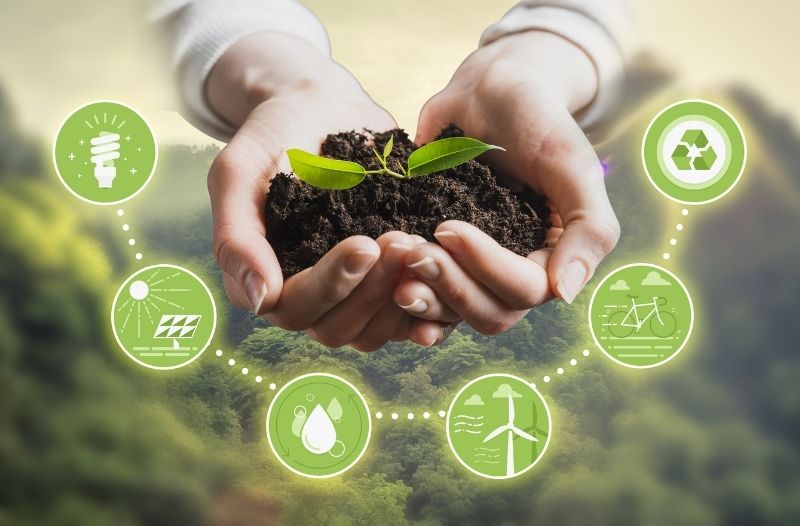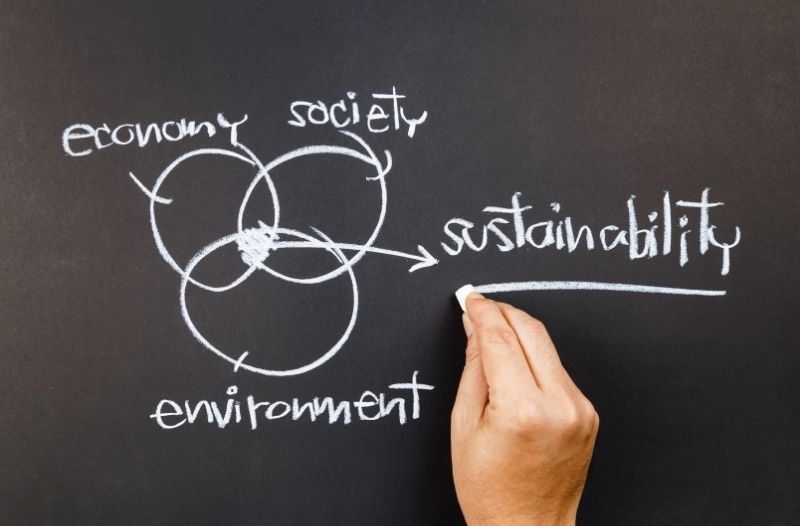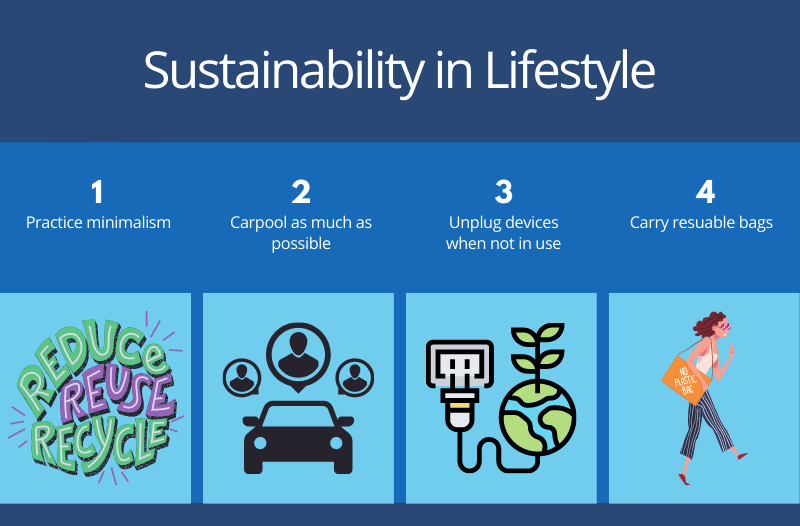The allBambu Blog
List of all our posts and news!
What Is Sustainability?
Sept. 17, 2021 | 12 mins | Tasneem

Sustainability is a hot topic around the world right now, and while many of us strive to be sustainable, the reality is that many of us don’t really know where to start. So today, we want to shed some light on what Sustainability really means, and how you can effectively encompass sustainability into your day-to-day life.
The name sustainability is derived from the Latin word sustainer which means to hold and sustain or to maintain or endure. Sustainability defines the ability of a system or process to endure over a period of time.
How sustainable something is can be understood in terms of its overall efficiency. If a system becomes inefficient at operating within its environment and it starts to consume more available resources and produces more waste, it then qualifies to be an unsustainable system or organization.
The most often quoted definition comes from the UN World Commission on Environment and Development: “Sustainability means meeting our own needs without compromising the ability of future generations to meet their own needs. In addition to natural resources, we also need social and economic resources.”

What are the 3 pillars of sustainability?
As we just understood, sustainability is a process by which things are kept at a certain level to maintain a balance. And to maintain that balance the concept of sustainability is divided into three pillars: environmental, social and economical development, also called the 3Ps (People, Planet & Profit) commonly represented by three intersecting circles with overall sustainability at the centre.
Let’s dive deeper into the 3 pillars of sustainability to get a better understanding of the goals.
Environmental Sustainability:
Environmental sustainability is a responsible interaction with the environment to avoid depletion or degradation of natural resources and allow for long-term environmental quality1. It occurs when processes, systems and activities reduce the environmental footprint of an individual/organization’s facilities, products and operations.
Here are some thought starters:
-
Reduce carbon footprint and pollution
-
Minimize waste generation
-
Protect and restore the health of natural habitats
-
Switch to renewable resources
Social Sustainability:
The social aspect of sustainability focuses on balancing the needs of the individual with the needs of the group.
Here are some thought starters:
-
Giveback (donations)
-
Practice Fair Trade
-
Promote Equal Opportunity
-
Provide an opportunity to learn (Education)
-
Planning and building of communities for sustainable living
Economic Sustainability:
Economic sustainability is used to define strategies that promote the utilization of socio-economic resources to their best advantage.
Here are some thought starters:
-
Implement cost-saving ideas
-
Create Jobs through the introduction of innovative technologies
-
Maintain supply and demand chain
-
Ways to be more energy efficient
-
Promote incentives & subsidies that encourage sustainable practices.

What is the primary goals of sustainability?
In 2012, the United Nations Conference on Sustainable Development met to discuss and develop a set of goals to work towards. The SDG came up with a list of 17 items sometimes called “The Global Goals”. It is a collection of independent goals carefully designed to give all of us on our planet a better future.
“The goals themselves to be simple and direct, but powerful, ranging from ending poverty to building sustainable cities. Any individual can find something on the diverse list of Sustainable Development Goals to work toward”2
Image credit: https://www.un.org/en/
How to incorporate sustainability in our day-to-day life?
We are living in a critical time, where the global supply of natural resources is declining dramatically, while the demand for these resources is ever-increasing.
We need to act differently if the planet needs to survive and thrive in the future. Sustainability is the path to how we can preserve the earth and ensure the continued survival and nourishment of future generations.
So, here are some examples of areas where you can incorporate sustainability into your daily lives easily and effectively:
1. Sustainability in Technology: Technology serves to make our lives easier, but it may also be the key to protecting the environment. Technological advances in recent years have made sustainable living more viable than ever.
Some examples of sustainable technology include:
-
Using electric vehicles
-
Switch to LED light technology
-
Dispose of electronic devices responsibly
-
Use of solar power as an alternate source of energy
-
Replacing old appliances with energy-efficient ones
-
Storing energy in a less wasteful manner

2. Sustainability in Fashion: “Sustainable fashion is fashion that’s mindful of its social, environmental and economic factors. It’s fashion developed by companies that pay their workers a living wage, give them safe, healthy working conditions and monitor its environmental impact, taking care to use more sustainable materials and reduce resource use throughout their products’ life cycle”.
Some examples of sustainable fashion:
-
Shop from sustainable clothing brand
-
Donate clothes so they can be used for as long as possible
-
Organize a cloth exchange for friends and family
-
Buy second-hand clothes
-
Choose natural materials
-
Buy less wear more

Sustainability in Travel: The number of people travelling across the globe is expected to increase to 1.8 billion by the year 2030. Travel allows us to discover some of our planet’s most stunning natural wonders and diverse ecosystems. So sustainability in travel & tourism is a way of travelling and exploring a destination while respecting its culture, environment, and people.
Some examples of sustainable travel
-
Choosing a destination that values sustainability
-
Booking hotels that value sustainability
-
Using a sustainable form of transportation
-
Going green while on the go
-
Reducing waste by leaving no trace

4. Sustainability in Lifestyle: “Sustainable living describes a lifestyle that attempts to reduce an individual’s or society’s use of the Earth’s natural resources, and one’s personal resources”. Practitioners of sustainable living often attempt to reduce their carbon footprint by altering methods of transportation, energy consumption, and diet.
Some examples of sustainable lifestyles:
-
Practice minimalism: Reduce, Reuse & Recycle
-
Walk, bike or carpool to work
-
Unplug devices when not in use
-
Buy products with less or recyclable packaging
-
Ditch plastic and switch to reusable alternatives
-
Carry your own reusable shopping bags
-
Get water-saving showerheads

Coronavirus and Sustainability
The pandemic may have altered our everyday sustainability practices, but there are still ways to live a sustainable lifestyle during these uncertain times.
-
Wear a reusable mask
-
Use reusable grocery bags and containers
-
Buy in bulk when you can to minimize grocery store visits
-
Declutter & clean your space and donate what you do not need
-
Invest your free time volunteering at sustainable & environmental organization
-
Try new recipes that are meatless or more sustainable
-
Support local sustainable brands
allBambu - What We Are About?
allBambu is at the forefront of sustainability, we not only have interesting and innovative green living bamboo products but we also make our products with love and care for the planet. Our products offer a great alternative to plastic which ends up in our oceans & landfills.
Our goal is to inspire consumers to make eco-conscious and sustainable lifestyle choices by educating and offering innovative, green lifestyle products.
Here are some Green Lifestyle products offered by allBambu